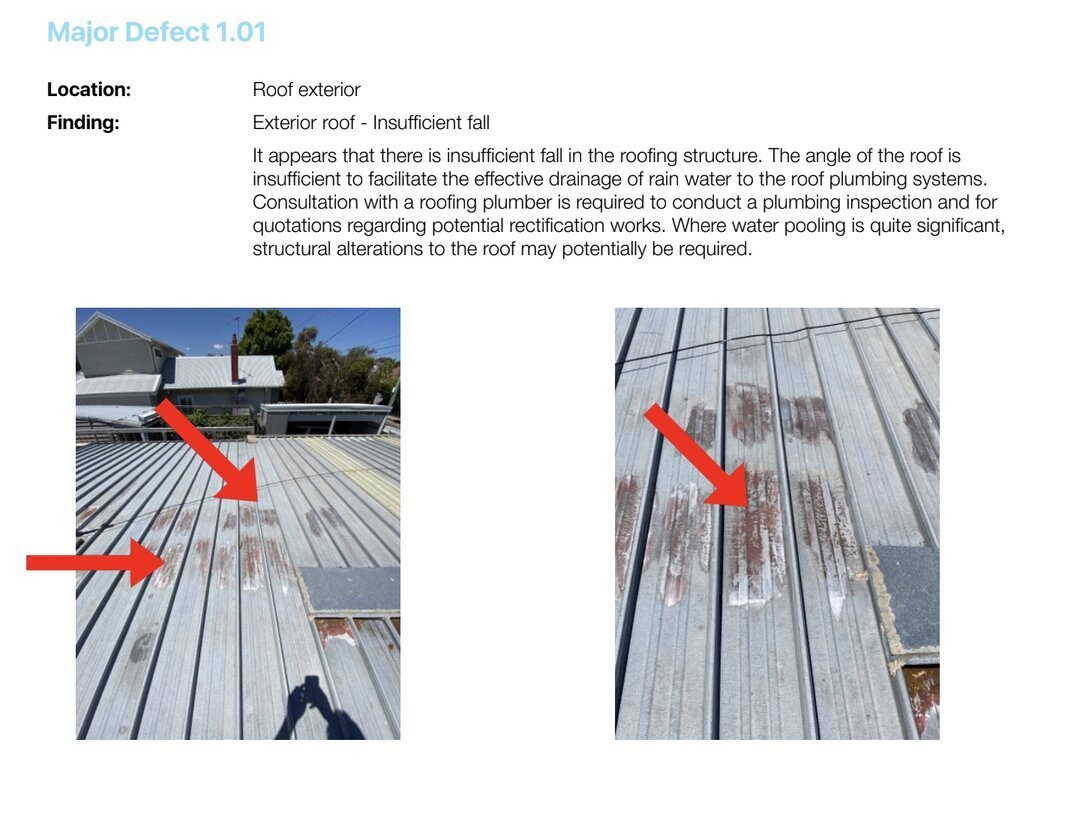Building Inspection Deal Breakers OR Deal Makers!?
We’re going to preface this by saying that when it comes to property and building inspections, everything is relative.. Relative to the property type, age, renovation, location, price point etc etc. What’s important is how you interpret the information.
We expect 99% of the reports we get to come back with some form of defects.. Some are more problematic and expensive than others. Instead of being thrown or turned off by the long and intimidating reports which literally point out everything that’s wrong with the property.. It is important to take into consideration if you were expecting the issues, if they are fixable, what the cost would be, if it’s then still a viable option in terms of budget and future planning, and are they typical for a like for like property of the same age and value.
Below we have noted a few terrifying defects that are actually quite common, and why you may still decide to proceed to purchase with an in depth understanding of what you’re getting into.
Asbestos. ASBESTOS!!! Will come up in almost every report on any property built before the 1980s. It is an incredibly sturdy building material commonly used back in the day. Often found in gables, eves, outhouses and sometimes behind tiling in bathrooms and laundries. If properly sealed (painted) and left untouched, it is perfectly safe. If you are planning to demolish buildings with asbestos present, you will need to allow for the extra costs associated with safe removal and disposal.
Inactive termites. This can usually be identified in the subfloor and roof cavity which often means they’ve probably run a path in the framing behind the walls too.. Your inspector may be able to see if a treatment has been done but other times that is unclear. So long as the structural integrity is not compromised and the termites are not currently present, this may be a defect you’re prepared to overlook.
Leaking shower / high moisture readings behind bathroom walls. Considered a major defect.. But may be relatively easily fixed. Particularly in the short term if you’re planning a renovation longer term.
Fence deteriorating. Considered a minor defect. This is usually obvious on physical inspection. Whether there’s a lean or rotted posts, if the fence is worth saving or needs replacing all together all have a cost associated. If it still falls within budget and doesn't need immediate attention, this could be seen as next years problem and not enough to get in the way of buying your dream home.
Uneven flooring. Can be considered a major or minor defect depending on the extent. Uneven flooring indicates general building movement and possible issues with the subfloor stumps. Or it could be that previous owners decided to reblock the house but not level it, meaning the house and stumps are stable however there remains some unevenness.
Subfloor - Lack of Ventilation. Ventilation can be restricted by a variety of minor defects, including obstructions in the subfloor space, a lack of vents or a low clearance. A well ventilated subfloor aids in maintaining dry conditions, preventing secondary damage such as building movement, rising damp, wood rot and pest activity, as well as preventing the development of mould and mildew.
Wood rot. Can be considered a major or a minor defect depending on the severity of it. Can be found anywhere from the bathroom, to carport or weatherboards.
Site drainage. Usually considered a major defect.. And can be exactly that, a major problem! It can cause subsequent water damage, secondary defects are likely to occur if left unmanaged.
Timber stumps. Usually come under a major defect as they usually have some level of deterioration, and are no longer used in building practices. If you buy a property on timber stumps you will need to restump the property with concrete stumps at some point in the future.
Condensation Evident. Considered a minor defect. And again, left untreated can cause mould to build up and should be addressed sooner rather than later through the installation of proper ventilation.
Exterior roof - Insufficient fall. It can be identified that there is insufficient fall in the roofing structure. Meaning the angle of the roof is insufficient to facilitate the effective drainage of rain water to the roof plumbing systems. Flat roofs are quite common but pooling water on a rooftop should be avoided.
If you’re having trouble deciphering your building inspection report, it can be helpful to call the inspector for a quick verbal overview. A simple, "would you buy this property?” is a good question to ask. Take their answer with a grain of salt of course, they may not understand the importance of the school zone!!!
And naturally if you need some advice, you know who to call.
Until next time!
